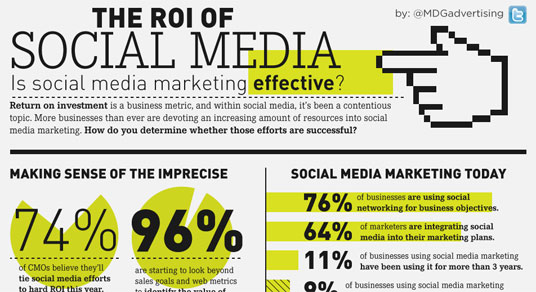Here’s a new CMO (Chief Marketing Officer) study, this time of 1,434 CMOs. (More here.) It appears the focus of this one was “social insights,” which is a valuable thing to poll 1400 CMOs about. Duke University did a CMO survey of 351 marketing leaders a few months back, and that one found that CMOs like social and encourage their teams to use it — but no one is really clear on the actual value of it. So what did this one say?
Seems the big trends are:
- Check-in apps are dead/dying.
- Marketers like LinkedIn a lot nowadays.
- A focus on the visual
- A focus on elements that can be easily shared between desktop and mobile
- CMOs tend to share from a small amount of brands when they share non-in-house content (i.e. Forbes, HubSpot, etc.)
- CMOs are supposedly focusing less on audience size with social and more on quality of audience
Let’s unpack this for a second:
- Check-in apps are a good source of data for some organizations, but I don’t know if said data will ever become money, so it’s probably best that trend is flaming out.
- LinkedIn … yep. It’s good, especially for B2B, although there’s a lot of “sales-y” nonsense on there sometimes (and waaaaaay too many inspirational quote posts), so it could flame out. It can send 4x the traffic to your homepage than Facebook does, though, so that’s notable — although simply publishing a long-form post doesn’t make you a thought leader.
- A focus on the visual? I really hope that’s not a new trend. I feel like humans have been pretty visual creatures for about 3-4 centuries.
- A focus on elements that can be easily shared between desktop and mobile? No question. Mobile is everything to me right now. What do you always have on you? Your phone and your wallet, probably. It’s at the point where we should scrap “digital natives” and go with “mobile natives.” It’s amazing to me when I talk to certain companies and they still view mobile as “a fad.” WTF?
- Sharing from a small amount of brands? This seems logical to me, but also stupid. Build your own content in-house, yo. You can do it.
- The audience size one does interest me. Social engagement doesn’t really matter. It’s just a number. 12,000 Twitter followers or 1,400 likes on a post doesn’t mean anything unless you can find a way to funnel that towards revenue. (You can, but the simple number “1,400” doesn’t mean anything. Clicking “like” is a totally harmless action in the modern age.)
- I doubt “audience size” will ever really die as a metric, though, because people love impressions and big numbers, you know? Especially if you’re running social, you’re probably a rank-and-file in the marketing/communications department, right? So when you present to the CMO and the CMO’s bosses, you got maybe 40 seconds of attention max, right? So you’re obviously tossing out the biggest, baddest, boldest numbers you can, no?
- Marketing analytics should really be about the story of how marketing drove someone out in the world to buy something even though he/she had all these choices, but sadly that’s never the narrative. (Or very rarely.) It’s all about the big number — “Well, we had a potential audience of 7 million on this Twitter campaign we ran…” — and that’s kind of the problem there.
Rumor is that CMOs are starting to spend more on analytics, which is cool … but there is a worry they won’t actually be doing it right.
What do you think about this CMO study? Good, bad, surprising, totally neutral?
